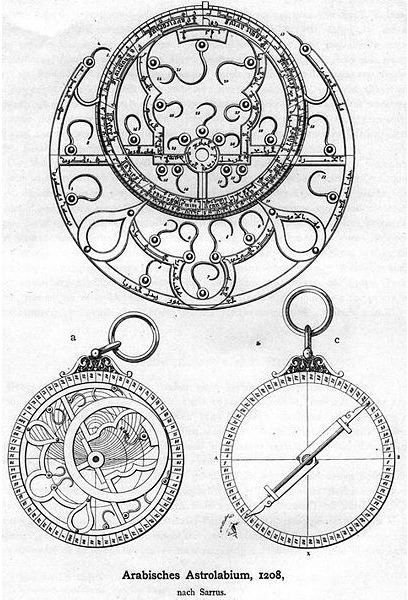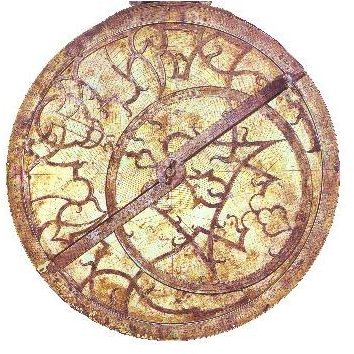Who Created an Astrolabe? In-depth Astrolabe History and Information on Its Structure and Uses
The Astrolabe: Meaning and Key Uses
An astrolabe is a multipurpose astronomical model of the celestial sphere that once was used by ancient and medieval astronomers. This portable ancient astronomical “lap-top computer” of the ancient era had several uses. Astronomers used the astrolabe to determine the positions of the sun and stars and corrected various celestial miscomprehensions. It was one of the most innovative
mechanisms in the Hellenistic world, but today, many people wonder who created an astrolabe?
The astrolabe consists of a disc-shaped piece of metal or wood suspended by a ring. The face of the circular metal has equator, tropics and 24 divisions of time engraved on it, with a celestial pole at the center of the circular metal plate. On the reverse, several circles with different gradations are engraved. The different circles with gradations represent months, days etc.
Before we delve deep into the astrolabe history, let us first understand its different uses. Ancient astronomers used this small ingenious mechanism by setting moveable gears to a specific date and time. Once the settings were adjusted, the astrolabe provided accurate measurements of the entire sky such as:
-
The position of the sun, moon and other heavenly bodies
-
The accurate time of the celestial event (sunrise, sunset, phases of the moon etc, the astrolabe was also used as a portable sundial)
-
Determine latitude & longitude and measure the altitude
The astrolabe was also used in surveying, navigation and triangulation (trigonometry/geometry). Some medieval astronomers even used an astrolabe for astrological purposes.
Who Invented the Astrolabe?

The multipurpose 2D mechanical replica of the celestial sphere has a deep history behind its invention and use. The astrolabe stems from the Greek words astron meaning star and lambanien meaning to take. It was created about two thousand years ago, whereas concept of astrolabe projections was known before 150 B.C. However, the creation of the first astrolabe is attributed to the Greek astronomer and mathematician Hipparchus. The brilliant astronomer invented this mechanism around 200 BC.
While the first Hipparchus-invented astrolabe was basic, complex astrolabes gained recognition after 400 AD. In around 800 AD, eastern Christian scholars (Greek or Syriac-speaking astronomers) introduced the concept and diagram of astrolabe to the Arab world. Later, in the medieval period astrolabes were specifically used as a navigating device to find the location of Kaaba in Mecca. It was also used in diverse areas such as astrology, navigation, timekeeping and horoscopes.
During the middle ages, the astrolabe saw several transformations and variations, including the popular spherical astrolabe and linear astrolabes created by inventors and astronomers of the Islamic world. In the fifteenth century, metal astrolabes began gaining popularity and were used by serious and amateur astronomers. The first metal astrolabe was created by Rabbi Abraham Zacuto in Lisbon in the fifteenth century.
Conclusion
The credit for the invention of the earliest astrolabe goes to Hipparchus, who created an astrolabe in its crudest form but gave the medieval world an important mechanism to understand the celestial sphere more accurately. Even today, different types of astronomical astrolabes are available for students to identify the functioning and uses. There are also several websites such as homesciencetools.com and the center for science education that provide kits and helpful how-tos on creating a personal astrolabe.
References
https://www.ifa.hawaii.edu/tops/astl-hist.html
https://www.muslimheritage.com/topics/default.cfm?ArticleID=529
https://www.tertullian.org/fathers/severus_sebokht_astrolabe_01_trans.htm
https://www.thepirateking.com/historical/astrolabe.htm
Image Credits
16th Century Astrolabe: Wikipedia
12th Century Astrolabe: Wikipedia
